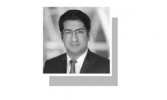Brain Gain: From Third World to First
The story of Singapore is spectacular. In one generation, it became immensely rich. As Lee Kuan Yew, the Prime Minister of Singapore from 1959 to 1990, proudly mentioned in his book, “From Third World to First”, Singapore’s GDP of S$ 3 billion in 1965, grew exponentially – more than 15 times – to S$ 46 billion in 1997. In fact, by 1997, Singapore had 8th highest per capita GNP, and it has only gotten richer since then. No doubt that such success is a result of multiple reasons. But one thing still stands out: Lee Kuan Yew made Singapore what it is, in major part, due to his unwavering commitment to finding the best person for the job.
He said so himself. “It has taken me some time to see the obvious, that talent is a country’s most precious asset”, he wrote in his “From Third World to First”. And this is why he “sought out able men and placed them in positions of authority as ministers and top public officers to administer an honest, efficient system and be responsive to the needs of the people”.
It is such an intuitive idea that it is hard to see how anyone can miss it. When, for instance, Lee wrote that “[m]y experience of developments in Asia has led me to conclude that we need good people to have good government”, one is tempted to respond that is another conclusion even possible?
But Lee did not just say it, he made it possible, and then showed us how. The proof is in the pudding. Singapore became a shining example for others to emulate. From Malaysia’s Mathathir to Sri Lanka’s Jayewardene, from China’s Deng Xiaoping to Pakistan’s Zia-ul-Haq and then, Nawaz Sharif, all actively sought Lee’s input, advice and guidance in trying to achieve what Singapore achieved.
The lessons from Singapore are many, which are lost on us. In Pakistan, we have failed to capitalize on our talent, have not attracted it to our shores, and, in fact, may have repelled it. Lee took his Singapore from the third world to first, by nurturing, developing, retaining and attracting talent. Pakistan, meanwhile, has done the opposite. No wonder it is pejoratively referred to as the “sick man of Asia”, getting sicker with time.
Best and Brightest
Lee uses the term “best and brightest” repeatedly in his book. This is primarily because he was always on a look-out for them. In his book, he mentioned the “best and brightest”, for instance, when he talked about, (1) building institutions from scratch; (2) placing people at the helm of major state-owned corporations; and, (3) analyzing the successes and failures of other countries.
Singapore was forced out of Malaysia in 1965, and there was an immediate need to develop defense capabilities. As with any other challenge, Lee’s Singapore sized up to this one as well. Lee’s approach, however, remained characteristic. In the Singapore Armed Forces (SAF), every year around ten of the brightest students were inducted, without whom, “the SAF would have the military hardware but without the brainpower to use them to best advantage”.
But that did not suffice. The best officer cadets were sent on scholarship to Oxbridge, where they undertook “full academic course in the humanities, sciences, engineering or other professions”, making them well-rounded. These officers had to serve in the SAF for eight years. During this time, they would be sent for two to three courses abroad, including “a course in public or business administration at a top American university such as Harvard or Stanford”.
As he developed this force with brain along with brawn, he had to “ensure that the SAF remained subordinate to the political leadership by keeping important functions such as manpower and finance under civilian officers in the defense ministry”. The soldiers with guns, even with their Oxbridge and Harvard degrees, were never given the........






















 Toi Staff
Toi Staff Sabine Sterk
Sabine Sterk Gideon Levy
Gideon Levy Penny S. Tee
Penny S. Tee Waka Ikeda
Waka Ikeda Mark Travers Ph.d
Mark Travers Ph.d John Nosta
John Nosta Daniel Orenstein
Daniel Orenstein
